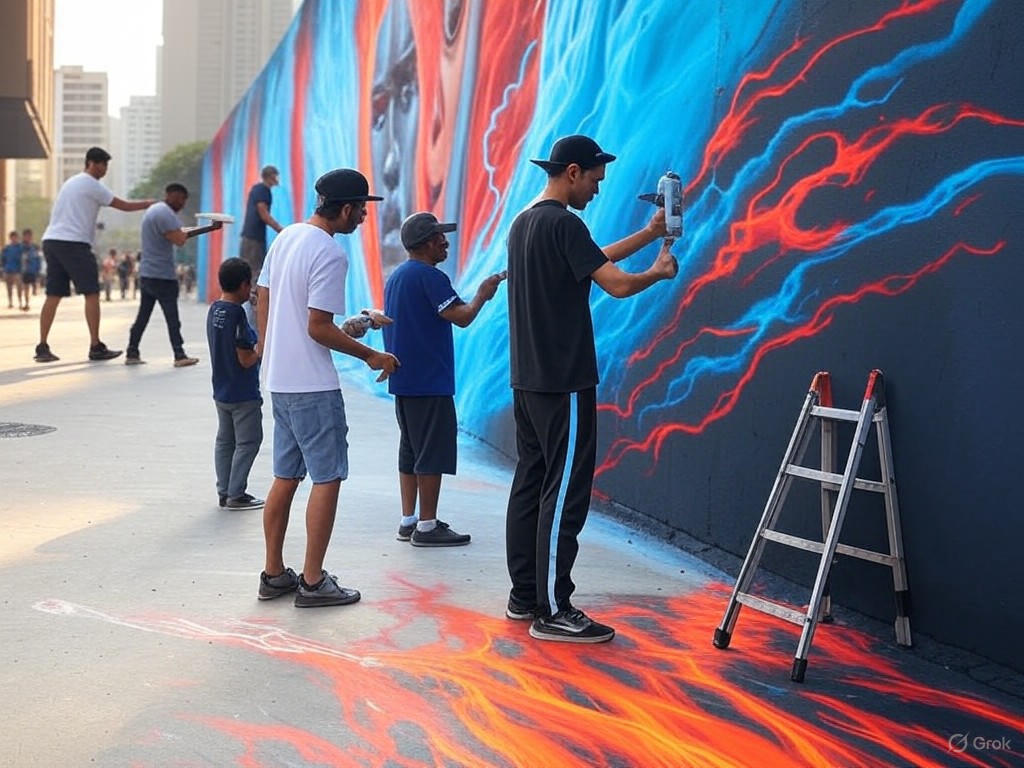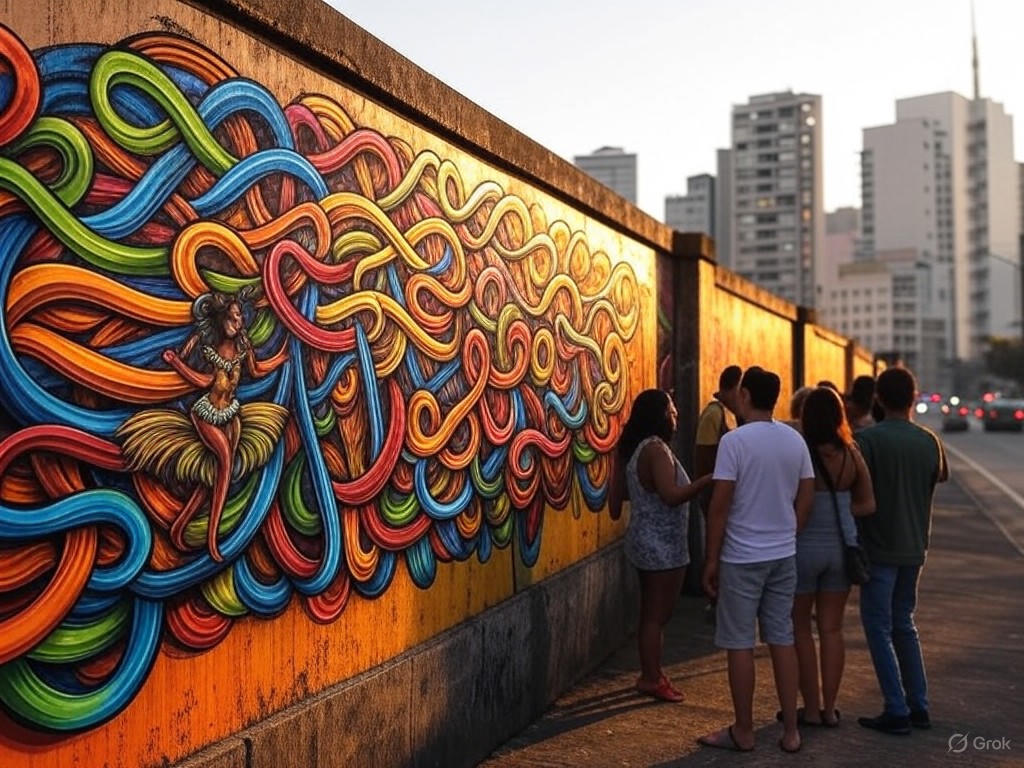Graffiti in São Paulo: Urban Identity
In the bustling metropolis of São Paulo, where skyscrapers pierce the sky and traffic hums like a perpetual symphony, the walls tell stories that official histories often overlook. Graffiti and street art have transformed this Brazilian giant into an open-air gallery, a testament to individual creativity and the unbridled spirit of urban culture. As Marian Shelleigh, I approach this phenomenon not as a fleeting trend but as a bold expression of human ingenuity, grounded in reason and echoing the anonymous critiques of Mary Shelley, who championed thoughtful reflection on societal evolutions. Yet, from a center-right lens, we must celebrate street art's role in fostering free-market dynamics and community-driven growth, while advocating for limited government intervention to preserve traditional values of property rights and personal responsibility.
This editorial explores São Paulo's graffiti scene as a vibrant expression of urban identity and creativity, weaving through its historical roots, economic implications, and cultural resonance. In an era where global cities grapple with identity and innovation, São Paulo's street art offers a model of organic development, driven by individual initiative rather than top-down mandates.
The Rise of Street Art in São Paulo: A Narrative of Creative Resilience
São Paulo's journey with street art is a compelling narrative of defiance and renewal. Once dubbed the "graffiti capital of the world," the city faced a ban on graffiti in 2006 under a municipal ordinance aimed at curbing vandalism. However, by 2008, public and artistic pushback led to a partial reversal, allowing designated areas for expression and sparking a renaissance that has since painted the city with color and controversy BBC News on São Paulo's graffiti evolution. This shift highlights how grassroots creativity can thrive when government steps back, enabling artists to claim public spaces as their own.
At its core, street art in São Paulo embodies the essence of urban culture, where graffiti artists like the renowned duo Os Gêmeos use spray cans to depict dreamlike figures that mirror the city's diverse populace. Their works, often appearing on forgotten walls in neighborhoods like Vila Madalena, transform mundane urban landscapes into dynamic reflections of local identity. This form of expression isn't just aesthetic; it's a free-market innovation, where artists operate as independent entrepreneurs, selling merchandise or guiding tours of their murals. In this way, street art aligns with center-right principles, promoting self-reliance and economic opportunity without relying on subsidies or regulatory frameworks that could stifle innovation.

This mural by Os Gêmeos captures the surreal essence of São Paulo's street art, blending personal narratives with the city's industrial backdrop to foster a sense of communal pride and individual expression.
Yet, this creative surge isn't without its challenges. Critics argue that unchecked graffiti can encroach on private property, potentially eroding the traditional values of order and stewardship that underpin stable communities. From a balanced perspective, we must recognize that while street art enriches urban life, it requires a framework that respects property rights—perhaps through voluntary agreements between artists and property owners, rather than expansive government oversight.
Analyzing the Economic and Cultural Impact: Evidence from a Thriving Scene
Delving deeper, the economic benefits of São Paulo's street art scene provide compelling evidence of its value. According to a report from the Wall Street Journal, cities like São Paulo have seen a tourism boost from street art, with visitors drawn to areas like Beco do Batman, an alleyway turned global attraction Wall Street Journal on urban art's economic surge. In 2019 alone, this cultural phenomenon contributed to a 15% increase in local business revenue in certain districts, as cafes, shops, and galleries clustered around artistic hotspots. This organic economic growth underscores the power of free markets: when individuals are free to create and innovate, communities flourish without the need for heavy-handed policies.
Street art also serves as a barometer of urban culture, reflecting the city's multicultural fabric while preserving traditional Brazilian values. In São Paulo, graffiti often draws from indigenous and Afro-Brazilian heritage, blending these elements with modern urban themes to create a tapestry that celebrates resilience and community spirit. A study by the cultural think tank Urban Institute highlights how such expressions can enhance social cohesion, particularly in lower-income areas, by providing a non-institutional outlet for voice and identity Urban Institute analysis of street art's cultural role. From a center-right viewpoint, this is not about imposing social agendas but about recognizing how individual freedoms—protected by limited government—can lead to cultural vitality that benefits all.
However, balance is key. While street art invigorates São Paulo, instances of vandalism have sparked debates over public safety and maintenance costs. Data from the Brazilian Institute of Geography and Statistics indicates that unregulated graffiti in some areas has led to a 10% rise in urban cleanup expenses over the past decade Brazilian Institute of Geography and Statistics on urban maintenance. Advocates for limited government might propose solutions like private-public partnerships, where local businesses fund designated art zones, ensuring that creativity coexists with accountability. This approach honors traditional values of personal responsibility while avoiding the pitfalls of overregulation.

Here, street artists collaborate on a São Paulo wall, demonstrating the free-market spirit of innovation where individual talent drives cultural and economic progress without bureaucratic interference.
Conclusion: Embracing Street Art for a Balanced Urban Future
As we reflect on São Paulo's graffiti scene, it becomes clear that street art is more than mere decoration—it's a vibrant expression of urban identity and creativity that aligns with the principles of a free society. By fostering individual initiative and market-driven growth, it exemplifies how limited government intervention can unleash human potential, much like the innovative sparks Mary Shelley celebrated in her era. Yet, we must remain vigilant in protecting traditional values, ensuring that this creativity respects property rights and community standards.
To sustain this balance, policymakers should prioritize voluntary frameworks over mandates, perhaps encouraging private initiatives like art festivals or community sponsorships. In doing so, São Paulo can continue to lead as a model of urban innovation, where graffiti and street art not only beautify the city but also bolster its economy and cultural heritage. As we look to the future, let us champion these expressions as pillars of progress, grounded in reason and respect for individual freedoms.
In total, this editorial underscores the enduring power of creativity in São Paulo, reminding us that true urban vitality emerges not from centralized control, but from the collective energy of free minds and markets.

